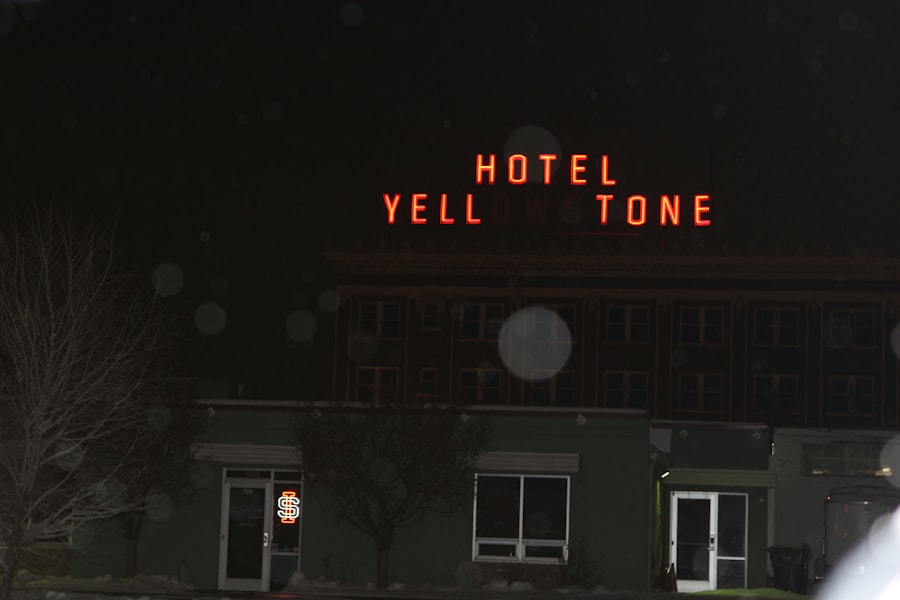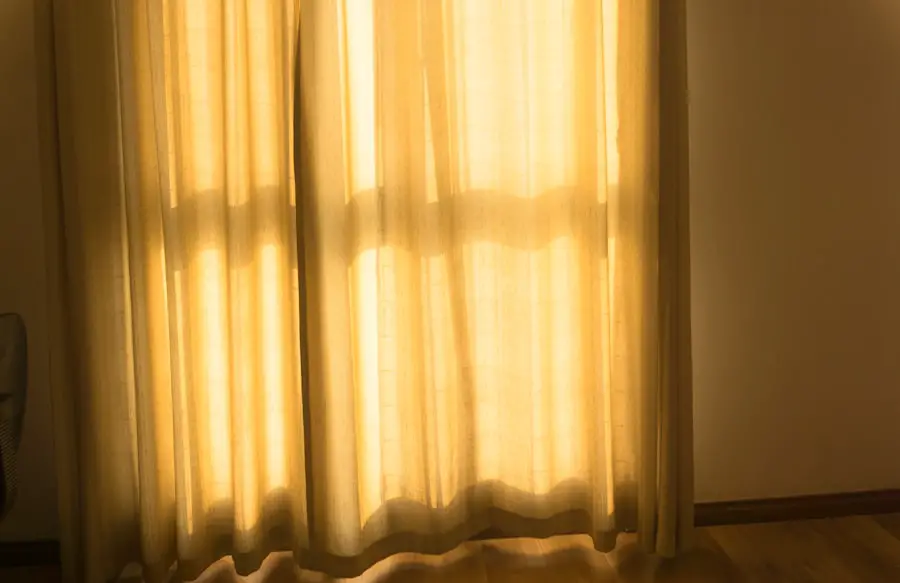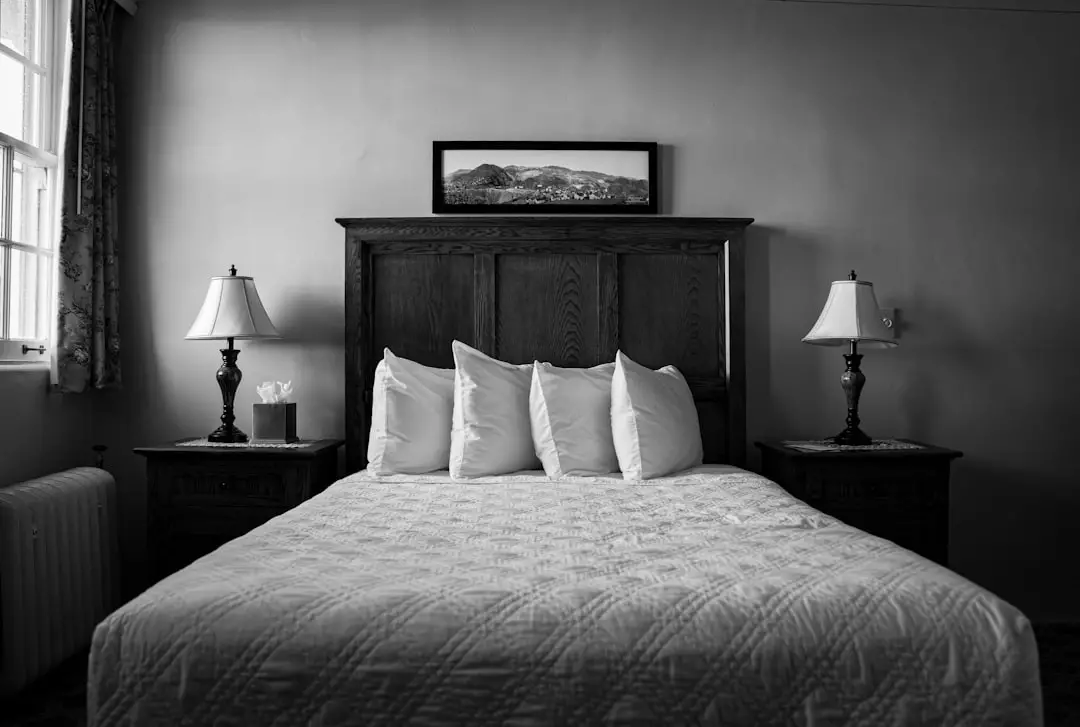Stephen King’s “The Shining” is a cornerstone of horror literature, weaving a tale that explores the fragility of the human psyche against the backdrop of a seemingly innocuous yet deeply sinister hotel. The Overlook Hotel, with its grand architecture and sprawling grounds, serves as both a character and a setting, embodying the themes of isolation, madness, and supernatural terror. The story follows Jack Torrance, an aspiring writer and recovering alcoholic, who takes a job as the winter caretaker of the Overlook.
As the snowbound months stretch on, the hotel’s dark history begins to unravel, revealing the malevolent forces that lurk within its walls. The Overlook becomes a crucible for Jack’s descent into madness, while simultaneously threatening his wife Wendy and son Danny, who possesses psychic abilities that allow him to perceive the hotel’s horrific past. The Overlook Hotel is not merely a backdrop; it is an entity that influences the characters and events throughout the narrative.
Its opulent yet eerie atmosphere sets the stage for psychological horror, where the boundaries between reality and illusion blur. The hotel’s vast, empty corridors and lavishly decorated rooms create a sense of both grandeur and entrapment, reflecting Jack’s internal struggles and the family’s disintegration. As the story unfolds, the Overlook reveals itself as a place where time is distorted, memories are manipulated, and the past refuses to stay buried.
This duality of beauty and horror is what makes “The Shining” a timeless exploration of fear and human vulnerability.
Key Takeaways
- The Shining and the Overlook Hotel are iconic elements of horror literature and film.
- The real-life inspiration for the Overlook Hotel is the Stanley Hotel in Colorado.
- The Overlook Hotel has a haunting history, including a tragic past and mysterious disappearances.
- The isolation of the Overlook Hotel plays a significant role in the story, contributing to the sense of dread and unease.
- The ghostly residents of the Overlook Hotel, including the infamous Grady twins, add to the chilling atmosphere of the story.
The Real-Life Inspiration for the Overlook Hotel
Stephen King drew inspiration for the Overlook Hotel from his own experiences at the Stanley Hotel in Estes Park, Colorado. In 1974, King and his wife stayed at this historic hotel during its off-season when it was nearly empty. The eerie ambiance of the Stanley, with its long hallways and empty rooms, sparked King’s imagination and led him to envision a story set in a remote hotel haunted by its past.
The Stanley Hotel’s grandeur, combined with its isolation amidst the Rocky Mountains, provided a perfect backdrop for exploring themes of madness and supernatural horror. King was particularly struck by the hotel’s ghost stories and its reputation for being haunted, which further fueled his creative process. The Stanley Hotel itself has a rich history that parallels the fictional Overlook.
Built in 1909 by Freelan Oscar Stanley, it was designed to be a luxurious retreat for wealthy guests seeking respite from city life. However, like many historic hotels, it has its share of ghostly legends. Guests have reported sightings of apparitions, unexplained noises, and other paranormal phenomena.
This blend of history and haunting made the Stanley an ideal muse for King as he crafted his narrative. The Overlook Hotel, while fictional, embodies many elements of the Stanley’s charm and eeriness, serving as a vessel for King’s exploration of fear and isolation.
The Haunting History of the Overlook Hotel

The Overlook Hotel is steeped in a haunting history that serves as a backdrop for the events of “The Shining.” In King’s narrative, the hotel is not just a physical space but a repository of trauma and violence. The ghosts that inhabit its halls are manifestations of its dark past—each with their own stories of despair and tragedy. From the mysterious disappearance of previous caretakers to incidents of violence that have marred its history, the Overlook is portrayed as a place where malevolent forces thrive on human suffering.
This history is crucial in understanding how the hotel exerts its influence over Jack Torrance and his family. One particularly chilling aspect of the Overlook’s history is its connection to violence and death. The hotel has seen numerous tragic events unfold within its walls, including murders and suicides that have left an indelible mark on its atmosphere.
These events are not merely backstory; they actively shape the experiences of those who enter the hotel. Jack’s gradual descent into madness is intricately linked to these spectral echoes of violence, as he becomes increasingly susceptible to the hotel’s dark allure. The ghosts of past guests seem to whisper to him, urging him toward violence against his own family—a reflection of how trauma can perpetuate itself through generations.
The Significance of the Overlook Hotel’s Isolation
| Metrics | Data |
|---|---|
| Distance from nearest town | 45 miles |
| Number of guests during winter | 3 |
| Amount of snowfall in winter | Over 100 inches |
| Distance from nearest hospital | 60 miles |
| Duration of isolation during winter | 5 months |
The isolation of the Overlook Hotel plays a pivotal role in amplifying the psychological horror experienced by Jack Torrance and his family. Nestled in the mountains and cut off from civilization during winter months, the hotel becomes a prison for its inhabitants. This seclusion heightens feelings of paranoia and claustrophobia, allowing the hotel’s supernatural elements to seep into their lives without external interference.
As snow blankets the landscape outside, trapping them within the hotel’s walls, Jack’s mental state deteriorates further under this oppressive isolation. Moreover, this physical separation from society mirrors Jack’s own internal struggles with addiction and anger. The isolation serves as a catalyst for his transformation from a struggling writer into a violent figure consumed by rage.
Without distractions or support from the outside world, Jack becomes increasingly vulnerable to the Overlook’s manipulations. Wendy and Danny also feel this isolation acutely; they are trapped not only in a physical sense but also emotionally as they grapple with Jack’s unraveling sanity. The hotel’s isolation thus becomes a character in itself—an entity that feeds on their fears and amplifies their vulnerabilities.
The Ghostly Residents of the Overlook Hotel
The Overlook Hotel is populated by an array of ghostly residents whose stories intertwine with that of Jack Torrance and his family. These spectral figures serve as reminders of the hotel’s violent past and act as harbingers of doom for those who enter its doors. Among them is Delbert Grady, a former caretaker who succumbed to madness and murdered his family within the hotel.
His presence looms large over Jack as he begins to lose his grip on reality; Grady becomes both an advisor and an ominous figure urging Jack toward violence. Another significant ghost is that of Room 237’s former occupant, whose tragic fate remains shrouded in mystery but profoundly impacts Danny Torrance. Danny’s psychic abilities allow him to perceive these spirits more acutely than others; he sees them not just as apparitions but as manifestations of fear and trauma that threaten his family’s safety.
The ghosts serve as conduits for the hotel’s malevolence, each representing different facets of despair—loss, betrayal, and violence—that ultimately converge on Jack as he succumbs to madness.
The Overlook Hotel’s Influence on the Characters

The Overlook Hotel exerts a profound influence on all characters within “The Shining,” shaping their actions and decisions throughout the narrative. For Jack Torrance, the hotel initially represents an opportunity for redemption—a chance to escape his troubled past and find solace in writing. However, as he becomes increasingly ensnared by its supernatural forces, it transforms into a catalyst for his darkest impulses.
The hotel amplifies his insecurities and frustrations, pushing him toward violence against his family as it preys on his vulnerabilities. Wendy Torrance also feels the weight of the Overlook’s influence as she navigates her husband’s descent into madness.
She becomes increasingly aware of her precarious situation; her instincts tell her that something is deeply wrong within their isolated environment. As she fights to protect Danny from Jack’s growing aggression, Wendy embodies resilience against both her husband’s transformation and the malevolent forces at play within the hotel.
The Overlook Hotel’s Role in the Film’s Atmosphere
In Stanley Kubrick’s film adaptation of “The Shining,” the Overlook Hotel plays an integral role in establishing an atmosphere thick with tension and dread. Kubrick masterfully utilizes cinematography to capture both the grandeur and eeriness of the hotel’s architecture—long corridors that seem to stretch into infinity, vast ballrooms filled with emptiness, and rooms that harbor dark secrets. The visual representation of the Overlook enhances its role as a character in itself; it looms over Jack and his family like an omnipresent force that shapes their fate.
Sound design further amplifies this atmosphere; unsettling music combined with ambient noises creates an auditory landscape that heightens feelings of unease. The creaking floors, distant echoes, and ghostly whispers contribute to an overwhelming sense of isolation that permeates every scene set within the hotel’s walls. Kubrick’s meticulous attention to detail ensures that viewers feel not just fear but also an unsettling curiosity about what lies behind each door or around every corner—an invitation to explore both the physical space of the Overlook and its psychological implications.
The Overlook Hotel’s Architectural Haunts
The architectural design of the Overlook Hotel is integral to its haunting presence in “The Shining.” Inspired by real-life hotels like the Stanley Hotel but embellished with Kubrick’s artistic vision, the Overlook features grand ballrooms, expansive lobbies, and labyrinthine hallways that evoke both awe and dread. Its opulent decor contrasts sharply with its sinister undertones; lavish chandeliers hang above empty spaces where laughter once echoed but now only silence reigns. The layout itself contributes to feelings of disorientation among characters—and viewers alike—as they navigate through its vast spaces.
The use of symmetry in design creates an unsettling effect; hallways appear endless while rooms seem to shift in size or shape depending on perspective. This architectural manipulation mirrors Jack’s deteriorating mental state; just as he loses touch with reality, so too does he become ensnared within the hotel’s confounding structure. Each room holds memories—both joyful and tragic—that haunt those who dare to enter them.
The Overlook Hotel’s Impact on Pop Culture
The impact of “The Shining” and its iconic Overlook Hotel extends far beyond literature and film; it has permeated popular culture in myriad ways since its release. From references in television shows to parodies in animated series, elements from King’s narrative have become ingrained in collective consciousness regarding horror tropes. The image of a haunted hotel has been reinterpreted across various media forms—often invoking themes similar to those found within “The Shining.” Moreover, fan conventions dedicated to Stephen King often feature discussions centered around “The Shining,” highlighting its lasting influence on horror storytelling.
The Overlook Hotel has inspired countless adaptations—both faithful and loose—demonstrating how its haunting legacy continues to resonate with audiences today. Its portrayal has sparked interest in real-life haunted hotels worldwide; many fans seek out locations reminiscent of King’s creation in hopes of experiencing their own brush with supernatural phenomena.
Exploring the Overlook Hotel’s Most Haunted Locations
Within “The Shining,” certain locations within the Overlook Hotel are particularly notorious for their ghostly activity—each holding significance in both narrative development and thematic exploration. Room 237 stands out as one such location; it serves as a focal point for Danny’s psychic visions and symbolizes both temptation and danger. The room is shrouded in mystery; it is here that Danny encounters a ghostly figure whose tragic fate intertwines with his own family’s struggle against malevolence.
Another significant area is the hedge maze outside—the very embodiment of entrapment that reflects Jack’s spiraling madness. As he navigates through this labyrinthine structure during his final confrontation with Wendy and Danny, it becomes clear that he is not just physically lost but also mentally ensnared by forces beyond his control. Each location within the Overlook contributes layers to its haunting narrative; they serve as reminders of past traumas while simultaneously shaping present horrors faced by those who inhabit them.
The Enduring Legacy of the Overlook Hotel
The legacy of the Overlook Hotel endures through its multifaceted representation in literature, film, and popular culture—a testament to Stephen King’s masterful storytelling and Stanley Kubrick’s cinematic vision. As both a setting steeped in history and an entity that influences characters’ fates, it encapsulates themes of isolation, madness, and supernatural terror that resonate across generations. The haunting presence of this fictional hotel continues to captivate audiences worldwide; it serves not only as a backdrop for horror but also as a mirror reflecting humanity’s deepest fears.
Through its architectural grandeur juxtaposed with chilling narratives woven into every corner, the Overlook remains an indelible part of horror lore—a place where time stands still while echoes of past tragedies reverberate through its halls. As new adaptations emerge or discussions about King’s work continue among fans old and new alike, one thing remains clear: The Overlook Hotel will forever haunt our imaginations long after we turn off our lights at night.
In the movie “The Shining,” the hotel where the terrifying events take place is actually the Timberline Lodge in Oregon. This iconic location has become a popular destination for fans of the film. If you’re planning a trip to visit this famous hotel, you may want to consider investing in one of the portable phone chargers recommended on TakeTravelInfo to ensure you stay connected during your getaway.
FAQs
What is the movie “The Shining” about?
“The Shining” is a psychological horror film directed by Stanley Kubrick, based on the novel of the same name by Stephen King. The story follows a family who becomes the winter caretakers of an isolated hotel, where the father’s psychic abilities lead to terrifying and supernatural occurrences.
Where was the hotel in the movie “The Shining” located?
The exterior shots of the hotel in “The Shining” were filmed at the Timberline Lodge in Oregon, USA. However, the interior shots were filmed on a set built at Elstree Studios in Hertfordshire, England.
Is the hotel from “The Shining” a real place?
Yes, the Timberline Lodge in Oregon, which was used for the exterior shots of the hotel in “The Shining,” is a real place. It is a historic hotel located on the south side of Mount Hood in Oregon, and it is still in operation today.
Can you visit the hotel from “The Shining”?
Yes, the Timberline Lodge in Oregon, which served as the exterior of the hotel in “The Shining,” is open to the public and welcomes visitors. However, the interior shots of the hotel were filmed on a set and do not correspond to the actual layout of the Timberline Lodge.
